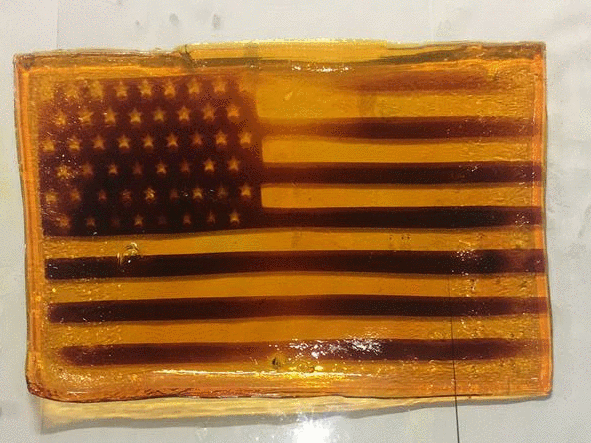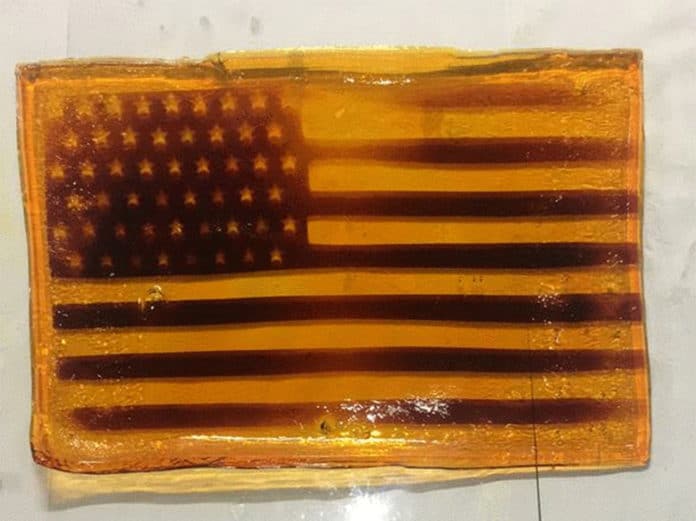A new study describes a new kind of responsive polymer that can activate exact locations in the gel, instead of all of it. The polymer consists of different types of hydrogel cross-linking strategy that uses a redox-responsive cross-linker, incorporated in poly(hydroxyethyl acrylate)-based hydrogels at three different weight percent loadings, which consists of two viologen subunits tethered by hexamethylene glycol and capped with styrene groups at each terminus.
Faheem Amir, a lead author on the paper and a postdoctoral researcher in the Barnes lab, reported success in several areas. “The process resulted in significant increases in the soft material’s stiffness, tensile strength, and percent elongation before breaking, all of which could easily be reversed via oxidation and swelling in water.”
“The hydrogels also allowed precise spatial resolution and control over where activations took place, which the team illustrated by photopatterning an American flag design.”
During the study, scientists mainly focused on developing soft, biocompatible materials that could sustain heavy loads. They redesigned the chemistry behind their polymer’s reactions to make new hydrogels using a biocompatible polymer. The base material, at present utilized in contact lenses, considers more prominent elasticity and can thus better help 3-D cell networks.

Jonathan Barnes, assistant professor of chemistry, said, “We’re using the photocatalyst to absorb light and transfer an electron to our polymer, which actuates the material. As soon as we turn off the light, and the material is exposed to oxygen in the ambient air, it reverses the process. It’s kind of like a sponge. When we push all the water out, it’s smaller, but then when you drop it back in the water, it will swell back up. It’s the same kind of process as in natural, mechanical systems, like muscles.”
After knowing that the process works under visible light, scientists refine their application by shining light on and activating only exact locations in the gel, not all of it.
Amir reported success in several areas. He said, “The process resulted in significant increases in the soft material’s stiffness, tensile strength, and percent elongation before breaking, all of which could easily be reversed via oxidation and swelling in water. The hydrogels also allowed precise spatial resolution and control over where activations took place, which the team illustrated by photopatterning an American flag design.”
Now, scientists have spatial control over the activation of the hydrogel; they can turn to optimize it for biomedical applications. Scientists will further focus on showing the durability of hydrogels to support applications with cells suspended in a 3-D matrix. Being able to activate specific areas in three dimensions is a key step toward successfully growing tissue in 3-D cell culture.
